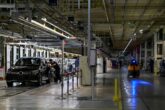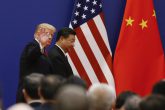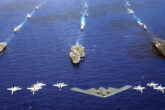September 07, 2017
Decoupling is back in Asia: A 1960s playbook won't solve these problems
It has been quite a summer in Pyongyang. Between July 4th, when it tested its first ICBM, and Labor Day weekend, when it detonated its sixth nuclear bomb — possibly a thermonuclear weapon — North Korea has presented the United States and the world with a new strategic reality. Pyongyang can use long-range missiles to reach almost any location in the United States, and likely has several dozen warheads. If it hasn’t fully miniaturized its nuclear capability yet, it is right on the cusp. And if its sixth nuclear test isn’t an H-bomb, it is least a boosted-fission weapon with the ability to devastate major cities. Observers should not cling hopefully to news of failed re-entry vehicles — North Korea is no longer a risible, rag-tag nuclear aspirant. For all intents and purposes, Pyongyang can hold much of the continental United States at risk and has functionally achieved a second-strike nuclear capability.
Read the full op-ed in War on the Rocks.
More from CNAS
-
Why Chinese Car Investments Are a National-Security Risk
If the U.S. wants to win the competition for technology and security, it must distinguish between productive investment and Trojan horses....
By David Feith
-
Geoeconomics Summit 2025 - The Changing Dynamics of Statecraft
David Feith, adjunct senior fellow at CNAS, participated in a panel during an Institute of Geoeconomics summit in Tokyo to compare geoeconomic statecraft under the Biden and T...
By David Feith
-
Trump Heads to Asia with High-Stakes Meeting with China’s Xi on the Agenda
President Donald Trump departed Washington Friday night for Asia with trade and U.S. relations with China top of mind. He is set to hold a high-stakes sit-down with Chinese Pr...
By Jacob Stokes
-
Defense / Indo-Pacific Security
Is the U.S. Ready for War with China?U.S. military planners are caught in an impossible dilemma....
By Franz-Stefan Gady




